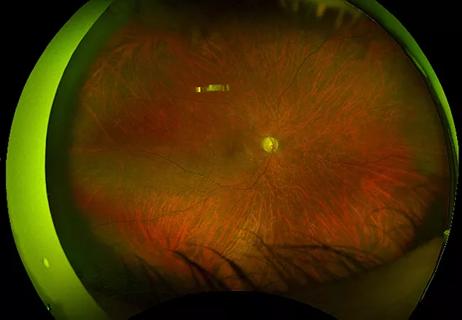Multisystemic inflammatory vasculitis on the rise in the U.S.

Cleveland Clinic is a non-profit academic medical center. Advertising on our site helps support our mission. We do not endorse non-Cleveland Clinic products or services. Policy
Behçet’s disease or syndrome (BS) is a multisystemic inflammatory vasculitis characterized by recurrent oral and genital aphtha, ocular disease, skin lesions, gastrointestinal involvement, neurologic disease, vascular disease or arthritis. It is classified under systemic vasculitis and is the only vasculitis that can affect any vessel size as well as the arterial and venous system.
BS is more common in the Mediterranean and Far East regions, but trend studies suggest an 18-fold increase in prevalence in the U.S. in recent years. The causes of this increase are unknown but could be partly attributed to population migration as well as increasing awareness of the disorder.
Some investigators regard BS as a “disease.” Others prefer the term “syndrome” due to its unknown pathogenesis, lack of clinically acceptable laboratory screening profile or definitive diagnostic test, and variability in prevalence and incidence. (Western patients tend to have a milder clinical course of BS than patients from ancient “Silk Road” countries.) Today, it is known that BS is a more complicated entity affecting every tissue and organ in the body without exception.
Insufficient cross-sectional studies of different populations make it impossible to compare phenotypic differences across the globe. Clusters of various disease manifestations occur — for example, acne with arthritis, superficial thrombophlebitis with deep vein thrombosis (DVT), and oral ulcers with genital ulcers and erythema nodosum.
These clusters could imply that the pathogenesis of BS is complex, with more than one mechanism. Furthermore, BS has a more aggressive and severe course in young adult males in the Eastern Mediterranean and Middle and Far East regions as compared to Western countries. This disparity could possibly be explained by genetic heterogeneity.
Diagnosing BS is based on pattern of clinical involvement, laboratory findings, tissue histology and imaging, usually in the context of:
The most commonly used criteria with the best sensitivity and specificity are the International Study Group (ISG) criteria for Behcet’s disease.
These criteria were developed to classify patients for research studies. Some investigators propose “strong” and “weak” elements in the definition of BS. A strong element, such as eye disease or vascular involvement, has unique features that distinguish BS from other pathological conditions. In contrast, weak elements, such as gastrointestinal involvement, point to more than one pathogenetic mechanism.
BS typically runs a relapsing and remitting course. The goal of treatment is to promptly suppress inflammatory exacerbations and recurrences to prevent irreversible organ damage.
Treatment should be individualized according to age, gender, type and severity of organ involvement, and patient preferences. Ocular, vascular, neurological and gastrointestinal involvement may be associated with a poor prognosis. Disease manifestations may ameliorate over time in many patients.
The European League Against Rheumatism (EULAR) recently updated its 2008 evidence-based recommendations for the management of BS. An expert committee defined the problem areas, performed a systematic literature search, and formulated a final set of recommendations and research questions. The committee included experts from several countries, specialists in all disciplines that care for patients with BS, as well as two patients with BS, thus incorporating many perspectives.
In addition to changing the title to “EULAR Recommendations for the Management of Behçet’s Syndrome,” updates include:
Despite ongoing efforts, recommendations for the treatment of vascular, gastrointestinal and nervous system involvement in BS still rely mostly on observational and uncontrolled evidence and expert opinion. While there have been some randomized controlled trials involving several agents for mucocutaneous, joint and eye involvement, very few have been head-to-head trials. There also is a lack of research evaluating the efficacy of different treatment strategies for BS, such as a step-up versus step-down approach.
More work in BS is needed. In particular, further research is warranted for controversial issues such as the role of anticoagulation in patients with thrombosis and the comparative efficacy of interferon alpha and TNF in patients with eye involvement.
Dr. Hajj-Ali is Associate Director of the Center for Vasculitis Care and Research at Cleveland Clinic.

Evidence-based therapies, monitoring, prevention and more

Holistic approach is necessary to ensure a correct diagnosis

Knowing the affected organs and vessels can help in identifying cause

When to consider the possibility of pulmonary artery involvement

When GCA initially presents without cranial symptoms

Relapses are frequent even with long periods of remission

Multidisciplinary management resolves complex case

Raising awareness of a common manifestation